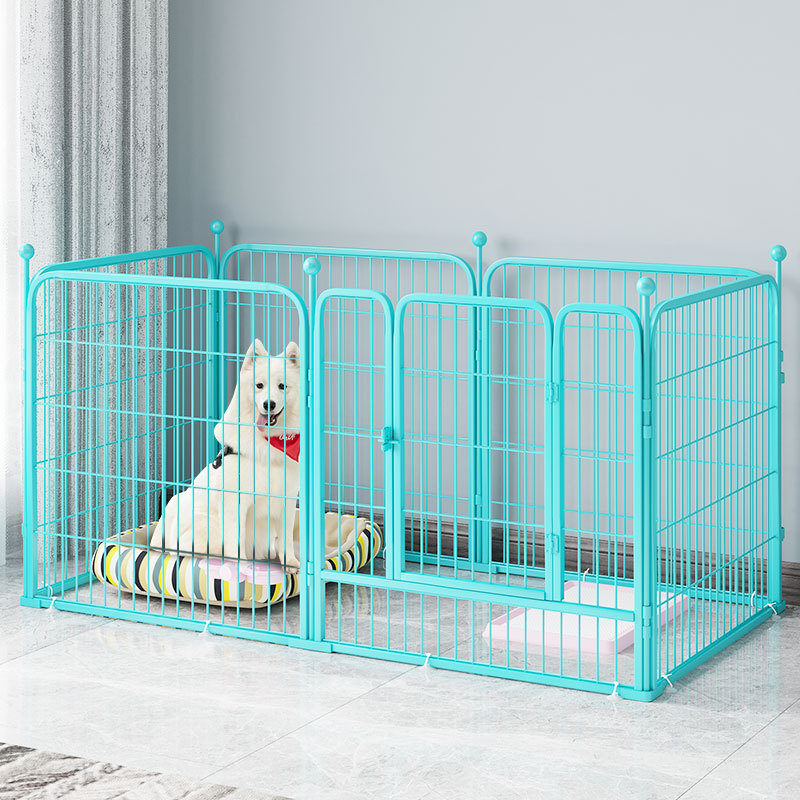
It is generally okay to let a dog sleep in a cage, provided that the cage is appropriately sized, comfortable, and used in a responsible manner. Many dogs naturally seek out enclosed spaces that resemble dens, and a properly designed and used cage can provide a secure and comforting sleeping environment for them.
Here are a few considerations for letting a dog sleep in a cage:
- Proper Size: The cage should be spacious enough for the dog to stand up, turn around, and lie down comfortably. It should not be too restrictive or confining.
- Comfort and Safety: Ensure that the cage has a soft bedding or mat to provide a comfortable sleeping surface. Remove any collars or tags that could potentially get caught in the cage. Avoid using the cage as a means of long-term confinement or punishment.
- Positive Association: Introduce the cage gradually and associate it with positive experiences, such as providing treats or toys inside the cage. This helps the dog view the cage as a safe and pleasant space.
- Avoid Excessive Confinement: Dogs should not be left in a cage for extended periods without regular breaks and exercise. Cages should be used as a temporary sleeping or resting area, not as a substitute for human interaction or exercise.
- Consideration for Individual Needs: Some dogs may have anxiety or other specific needs that should be taken into account when using a cage for sleep. Consult with a veterinarian or professional dog trainer if you have concerns about your dog’s specific situation.

How many hours should a dog be in a cage?
The amount of time a dog can spend in a cage, also known as a dog crate or kennel, depends on several factors, including the dog’s age, physical health, and individual needs. It’s important to strike a balance between providing a safe and secure environment for the dog and ensuring they have enough exercise, mental stimulation, and social interaction.
Here are some general guidelines for the maximum time a dog should spend in a cage:
- Puppies: Puppies have limited bladder control and higher energy levels. They should not be confined to a cage for extended periods. A general rule of thumb is that puppies can stay in a crate for their age in months plus one hour. For example, a three-month-old puppy can be crated for a maximum of four hours at a time.
- Adult Dogs: Adult dogs can typically handle being in a crate for longer durations, but it’s still important to provide regular breaks for exercise, bathroom breaks, and social interaction. As a general guideline, adult dogs should not be crated for more than 4-6 hours at a time.
- Senior Dogs or Dogs with Health Issues: Older dogs or dogs with specific health conditions may have different needs. They may require more frequent breaks and should not be left for extended periods in a crate without necessary care and attention.
It’s crucial to note that the time spent in a cage should not be the sole means of confinement for a dog. Dogs need regular exercise, mental stimulation, and social interaction to thrive. When the dog is not in the crate, it’s important to provide them with ample opportunities for physical activity, playtime, training, and human interaction.
If you find that your dog needs to spend more time in a crate due to specific circumstances, such as during travel or while transitioning to being alone at home, it’s essential to balance the crate time with sufficient breaks and attention outside the crate.
Always consider your dog’s individual needs, and consult with a veterinarian or professional dog trainer for guidance on appropriate crate usage and duration based on your dog’s specific situation.
Remember, the purpose of a dog cage is to provide a secure and comfortable space for the dog, and it should never be used as a means of punishment or long-term confinement. Each dog is unique, and their individual needs and preferences should be considered when deciding whether or not to let them sleep in a cage.
